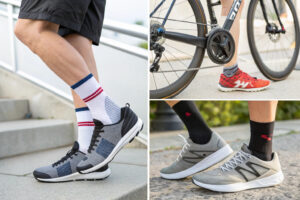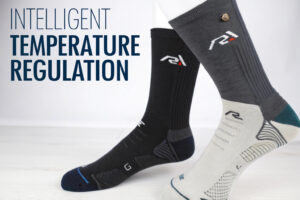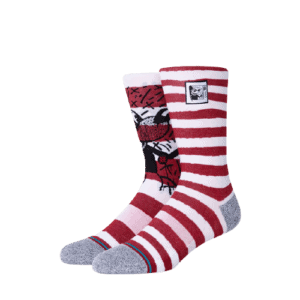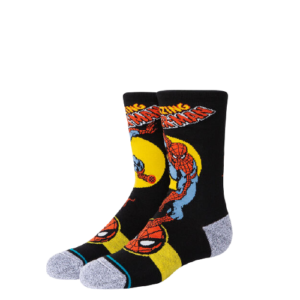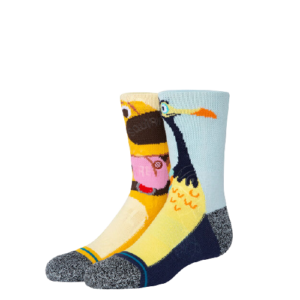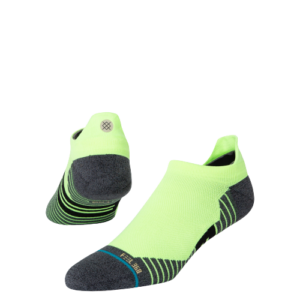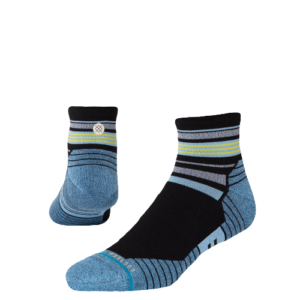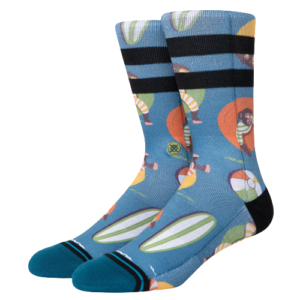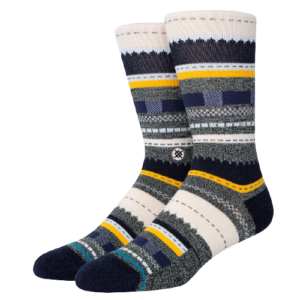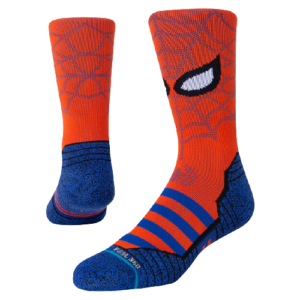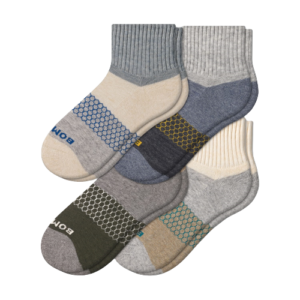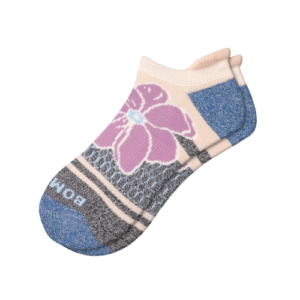CrossFit athletes push their limits every day. They need gear that can keep up. Socks might seem like a small detail, but the wrong pair can lead to blisters, discomfort, and even injury. So, what truly makes a sock the best for the high-intensity, varied movements of CrossFit? The answer lies in a powerful combination of uncompromising durability and superior ventilation. As a socks manufacturer with over a decade of experience supplying professional athletes and brands, I've seen how the right materials and construction directly impact performance. Let's dive into why these two factors are non-negotiable.
The best socks for CrossFit are those that master the balance between rugged durability to withstand friction and exceptional ventilation to manage moisture and heat. This specific combination prevents blisters, keeps feet dry and comfortable, and ensures the sock lasts through countless WODs. At our facility in Zhejiang, we've developed and tested countless prototypes to perfect this very balance for our athletic sock lines.
Understanding the core requirements is the first step. Now, let's break down the specific features you should be looking for to ensure your socks can handle the box.
What Features Make Socks Durable for CrossFit?
Durability in CrossFit socks isn't just about thick fabric. It's about strategic reinforcement in high-impact areas. A sock that wears out after a few rope climbs or double-unders is a liability, not an asset. The constant friction from agile footwork, weighted lifts, and equipment like jump ropes demands a sock built with purpose and precision.
The key to durability lies in reinforced zones and advanced fabric blends. Socks need extra protection in the heel and toe, where abrasion is most common. Furthermore, the main body of the sock must be made from high-tenacity fibers that resist pilling and tearing while maintaining their shape wash after wash. This targeted approach ensures the sock protects your feet without compromising on flexibility or feel.
How Does Reinforced Heel and Toe Construction Prevent Wear?
The heel and toe areas bear the brunt of the force during CrossFit workouts. From the repetitive impact of box jumps to the friction inside your lifting shoes, these are the first points of failure. A standard sock will quickly thin out, leading to holes and exposing your skin to blisters. Implementing a reinforced heel and toe is a game-changer. This construction uses a tighter knit or additional yarn in these specific zones, creating a shield against abrasion. For activities like rope climbs, some athletes even prefer socks with extra padding on the instep. This focused durability means your socks last longer, saving you money and ensuring consistent protection. We integrate this reinforcement seamlessly into our socks, ensuring there are no uncomfortable seams that could cause irritation during high-pressure movements.
Why Are Nylon/Spandex Blends Crucial for Longevity?
While cotton is soft, it breaks down quickly and holds moisture. For durable CrossFit socks, the material composition is critical. A blend of Nylon and Spandex is often the gold standard. Nylon is renowned for its exceptional strength and abrasion resistance, making it far more durable than cotton or even some types of polyester. The Spandex (or Lycra) component provides the essential elasticity for a secure, non-slip fit that doesn't bag out over time. This combination results in a sock that maintains its integrity, shape, and compression through intense workouts and frequent washing. At our CNAS-certified lab, we rigorously test the tensile strength of our nylon blends to ensure they meet the demands of professional athletes and everyday CrossFitters alike.
Why is Moisture-Wicking and Ventilation Essential?
Ventilation is the other half of the CrossFit sock equation. A durable sock that traps sweat is a recipe for disaster. Moisture softens the skin, dramatically increasing the risk of blisters and creating an environment where bacteria and fungi thrive. Proper ventilation works in tandem with moisture-wicking to keep feet dry, cool, and healthy.
Moisture management is a multi-faceted process. It starts with fibers that pull sweat away from the skin and continues with a knit structure that allows air to circulate and moisture to evaporate quickly. This is not just about comfort; it's a critical component of foot health and performance. A dry foot is a secure foot, with less sliding inside the shoe, which enhances stability during lifts and gymnastic movements.

How Do Breathable Fibers Like Bamboo Enhance Comfort?
Natural fibers like Bamboo are excellent for ventilation. Bamboo viscose is inherently breathable and has superior moisture-wicking capabilities. It can absorb and evaporate moisture much faster than cotton, keeping the foot feeling noticeably cooler and drier. Furthermore, bamboo fiber has natural antibacterial properties, which help control odor—a welcome benefit for any athlete. While pure bamboo might lack the sheer durability of nylon, blending it with stronger synthetic fibers creates a perfect balance of comfort, breathability, and longevity. Our Bamboo Socks line is a testament to this, offering a soft, eco-friendly, and highly functional option for athletes.
What Role Does Mesh Paneling Play in Airflow?
Beyond the fiber itself, the physical construction of the sock can greatly enhance ventilation. Strategic mesh paneling in high-sweat areas like the instep and top of the foot creates channels for air to flow freely. This design feature acts like a built-in cooling system, accelerating the evaporation process. It also reduces the overall weight of the sock without sacrificing protection in key areas. When evaluating socks, look for these engineered zones of lighter, more open knitting. They are a clear indicator that the manufacturer has considered the biomechanics of the foot and the intense demands of sports like CrossFit. This is a standard feature we incorporate into our Athletic Socks for optimal temperature regulation.
How to Choose the Right Sock Fit and Compression?
A sock can have the most durable and breathable materials, but if the fit is wrong, it will fail. The right fit is paramount for performance and protection. A loose sock will bunch up, creating pressure points and hotspots, while a sock that's too tight can restrict circulation and cause numbness during long training sessions.
The ideal CrossFit sock offers a secure, compressive fit that feels like a second skin. It should hug the arch and ankle without constricting, and stay firmly in place from the first burpee to the last wall ball. Features like arch support and a seamless toe are not just marketing terms; they are functional elements that contribute to a superior, distraction-free fit.

Why is Arch Support a Game-Changer?
Arch support in socks is an often-overlooked feature that provides significant benefits. It is typically a band of elasticated fabric that cradles the arch of the foot. This does more than just feel comfortable; it reduces muscle fatigue by stabilizing the foot, which can improve proprioception during lifts. It also prevents the sock from sliding down or twisting around the foot, eliminating a major source of irritation. For athletes with plantar fascia issues, light compression from arch support can offer welcome relief. This feature turns a simple sock into a true piece of performance gear, actively contributing to your workout rather than just being a passive barrier.
What are the Benefits of a Seamless Toe?
A traditional toe seam can become a point of intense irritation, especially in the close confines of a minimalist CrossFit shoe. The constant rubbing can quickly lead to blisters on the tops of your toes. A seamless toe construction, where the sock is knitted in a continuous loop at the front, eliminates this problem entirely. The interior is smooth and flat, providing a uniform surface that glides against your skin without friction. When you're focused on your form for a heavy clean or a set of toes-to-bar, the last thing you want to notice is your sock. A seamless toe ensures you won't.
What Are the Top Sock Styles for CrossFit Athletes?
The length of your sock is a matter of personal preference, but each style offers distinct advantages. The good news is that the core technologies of durability, moisture-wicking, and secure fit are available across all styles. Your choice ultimately depends on your desired level of coverage, protection, and aesthetic.
From the minimalist no-show to the protective crew sock, the best style is the one that you forget you're wearing. It should integrate so seamlessly with your gear that you can focus entirely on your performance. At GlobalSock, we produce the full spectrum, ensuring that no matter your preference, you don't have to compromise on the essential performance features.

Are No-Show Socks Suitable for High-Intensity Training?
No-Show Socks are a popular choice for athletes who prefer a minimalist feel and a "sockless" look, especially with low-top training shoes. The key is to find a no-show sock that truly stays in place. Look for models with silicone grips or elastic bands along the inner heel; this prevents them from slipping down during repetitive movements like running or jumping. A quality no-show will still incorporate all the critical features: moisture-wicking fabrics, reinforced zones, and a seamless toe. They offer adequate protection for most WODs, though they may not be the best choice for exercises like rope climbs where higher coverage is beneficial.
When Should You Opt for Quarter or Crew Socks?
Quarter Socks (rising just above the ankle) and Crew Socks (reaching mid-calf) provide additional coverage and protection. This makes them ideal for workouts involving rope climbs, as they shield your shins from painful burns. The extra fabric can also provide a slight psychological feeling of support for the ankle and calf muscles. Many athletes also find that crew-length socks are better at wicking sweat away from the lower leg. These styles are the workhorses of the CrossFit world, offering the most comprehensive protection without sacrificing any of the technical performance features.
Conclusion
Choosing the best socks for CrossFit is a strategic decision that directly impacts your comfort, safety, and performance. The winning formula consistently points to durable construction—featuring reinforced heels and toes and robust materials like nylon blends—coupled with exceptional ventilation through moisture-wicking fibers and strategic mesh paneling. A perfect fit with arch support and seamless toes completes the picture, creating a sock that works as hard as you do.
If you are a brand, retailer, or distributor looking to create your own line of high-performance CrossFit socks that embody these exact principles, we should talk. Our expertise in functional sock manufacturing, from agile R&D to stringent quality control, ensures your products stand out. For a partnership that co-creates value, reach out to our Business Director Elaine at elaine@fumaoclothing.com to discuss your custom sock production needs.



